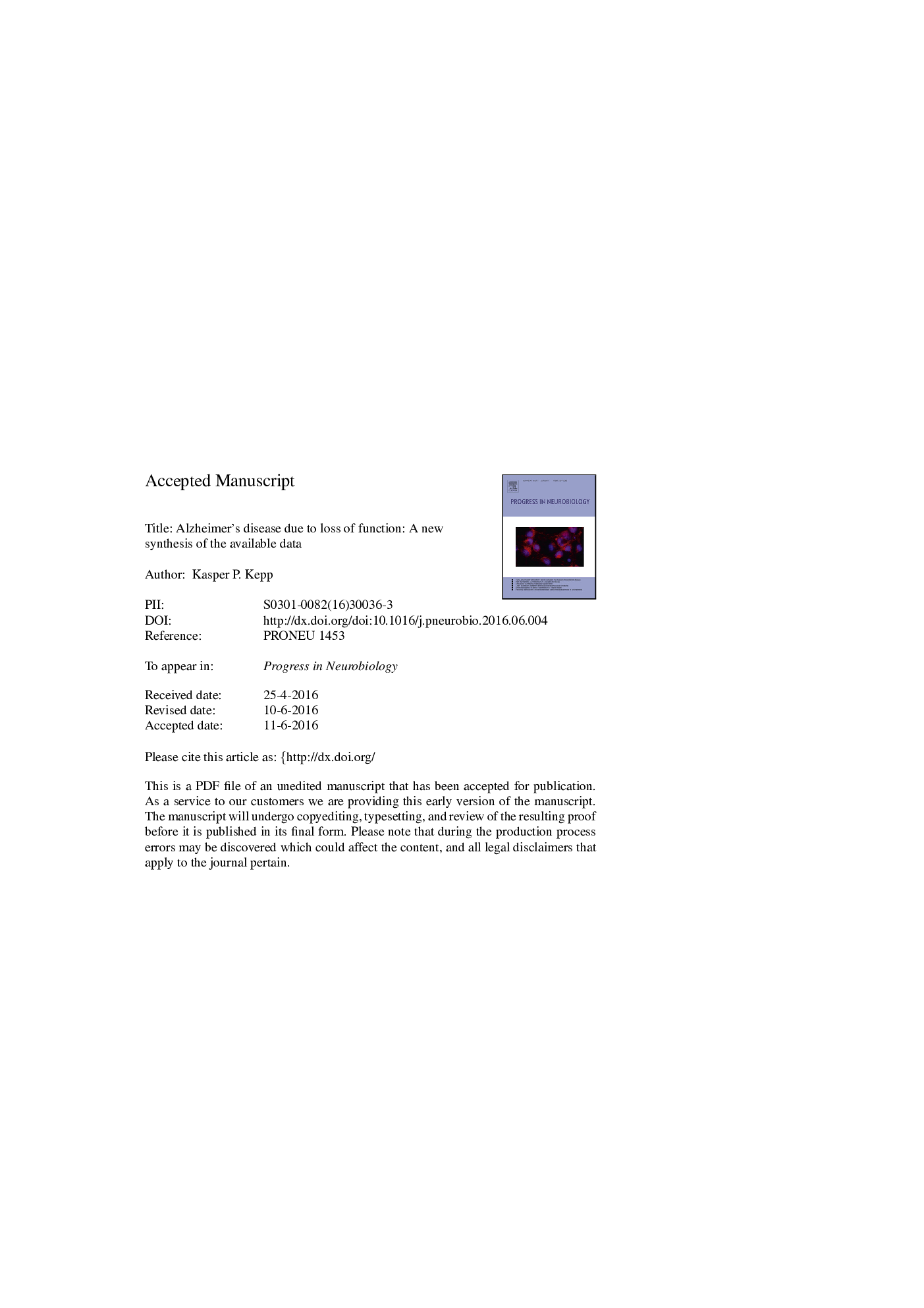| Article ID | Journal | Published Year | Pages | File Type |
|---|---|---|---|---|
| 6286455 | Progress in Neurobiology | 2016 | 78 Pages |
Abstract
Alzheimer's Disease (AD) is a highly complex disease involving a broad range of clinical, cellular, and biochemical manifestations that are currently not understood in combination. This has led to many views of AD, e.g. the amyloid, tau, presenilin, oxidative stress, and metal hypotheses. The amyloid hypothesis has dominated the field with its assumption that buildup of pathogenic β-amyloid (Aβ) peptide causes disease. This paradigm has been criticized, yet most data suggest that Aβ plays a key role in the disease. Here, a new loss-of-function hypothesis is synthesized that accounts for the anomalies of the amyloid hypothesis, e.g. the curious pathogenicity of the Aβ42/Aβ40 ratio, the loss of Aβ caused by presenilin mutation, the mixed phenotypes of APP mutations, the poor clinical-biochemical correlations for genetic variant carriers, and the failure of Aβ reducing drugs. The amyloid-loss view accounts for recent findings on the structure and chemical features of Aβ variants and their coupling to human patient data. The lost normal function of APP/Aβ is argued to be metal transport across neuronal membranes, a view with no apparent anomalies and substantially more explanatory power than the gain-of-function amyloid hypothesis. In the loss-of-function scenario, the central event of Aβ aggregation is interpreted as a loss of soluble, functional monomer Aβ rather than toxic overload of oligomers. Accordingly, new research models and treatment strategies should focus on remediation of the functional amyloid balance, rather than strict containment of Aβ, which, for reasons rationalized in this review, has failed clinically.
Keywords
APLP2AβAPPNMDAN-methyl-d-aspartateAPOE4SOD1Aβ42β-site APP cleaving enzyme 1LRP1AICDCLUsAPPαSORL1CTR1ZnT3Divalent copperPSENCuBDMEF2PDBBACE1CAAnuclear magnetic resonanceAβ40Zn(II)β-Amyloidcerebral amyloid angiopathyEDTAloss of functionamyotrophic lateral sclerosisFADAlzheimer’s diseaseAlzheimer's diseaseSporadic Alzheimer's diseasefamilial Alzheimer's diseaseALSNMRPositron emission tomographyMetal transportAPP intracellular domainsuperoxide dismutase 1endoplasmic reticulumCircular dichroism spectroscopymyocyte enhancer factor-2Protein misfoldingSADMetallothioneinCu(II)Genome-wide association studiesGWASPETPresenilinProtein Data BankLow-density lipoprotein receptor-related proteinamyloid precursor proteinAmyloid precursor-like protein 2β-amyloid peptide
Related Topics
Life Sciences
Neuroscience
Neuroscience (General)
Authors
Kasper P. Kepp,
